Abstract
Many medical visits are generated by psychosocial problems or their symptoms. Every family physician, therefore, should have counseling skills despite constraints of time and training. This article discusses issues such as the characteristics of effective therapists, the limitations of the medical model, the core role of self-esteem in anxiety and depression, and the importance of purpose and meaning to physical and mental health.
Full text
PDF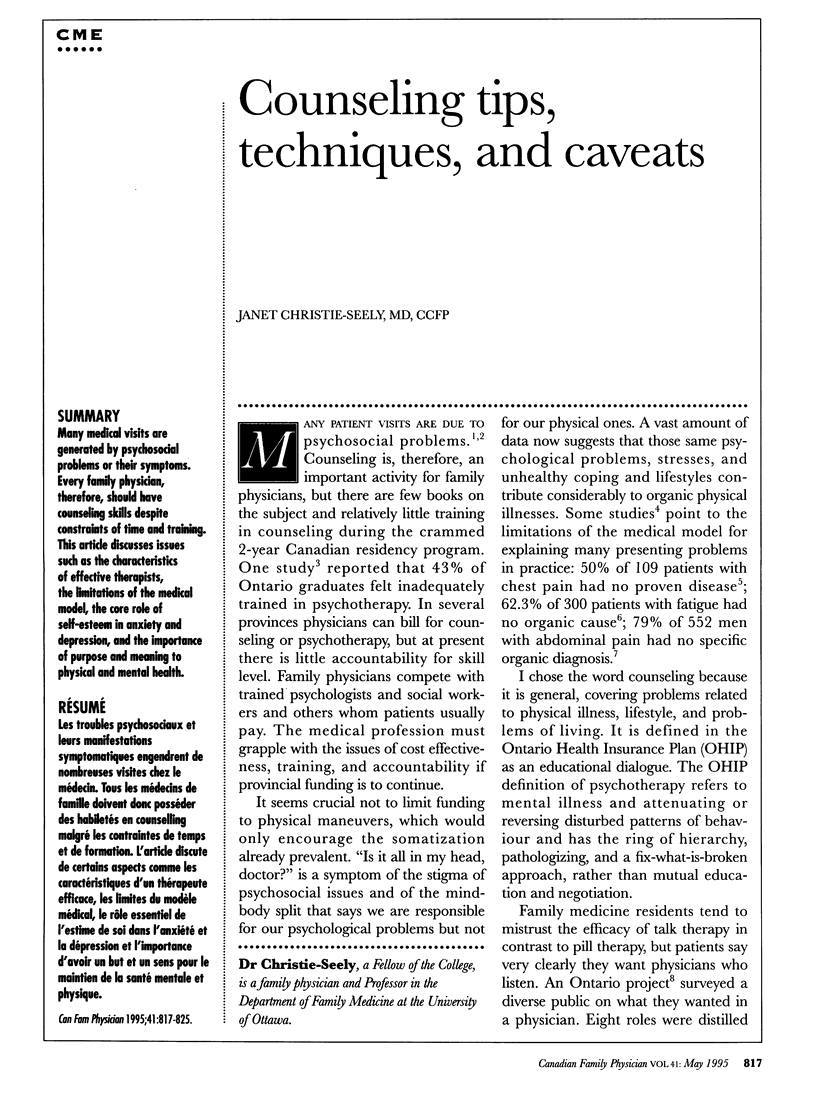
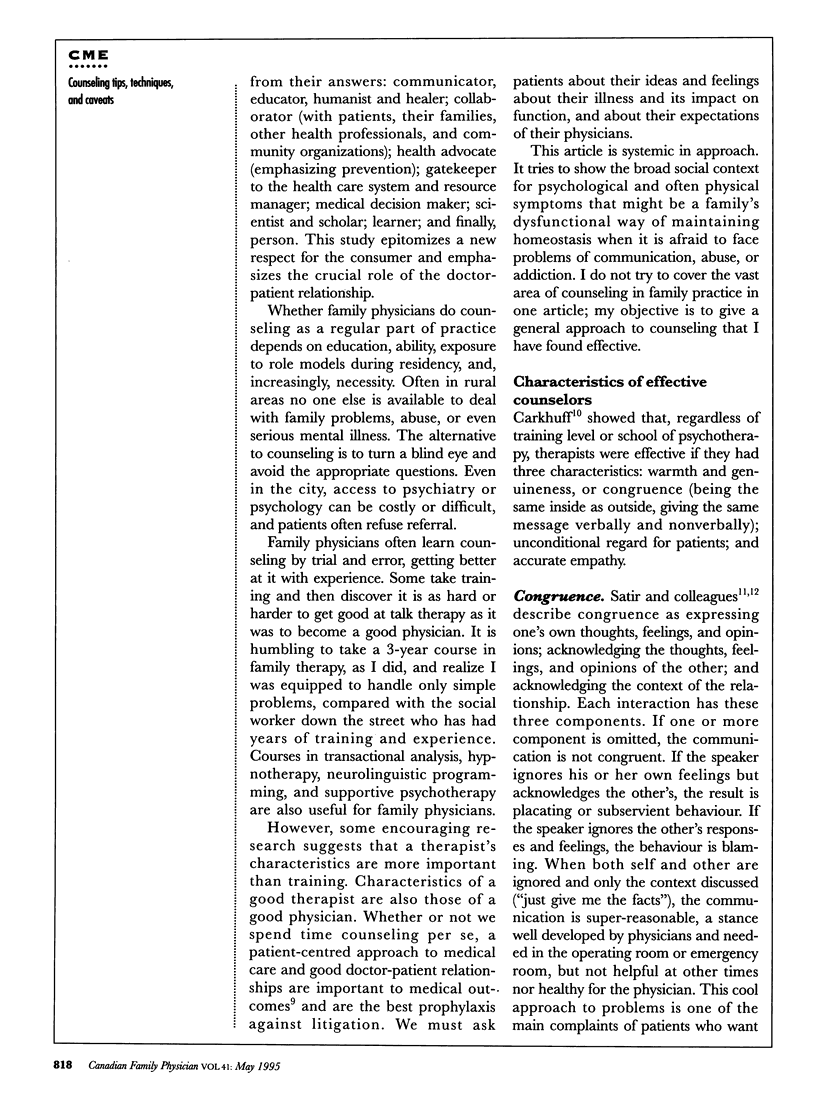
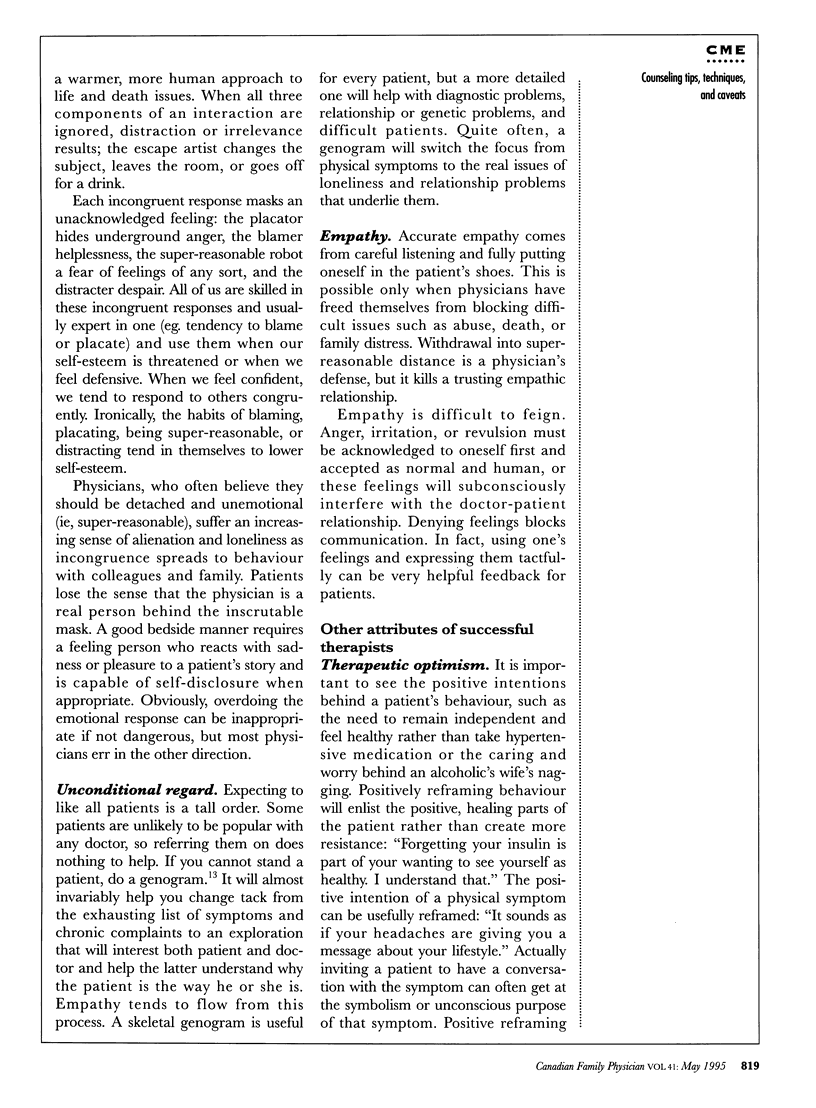
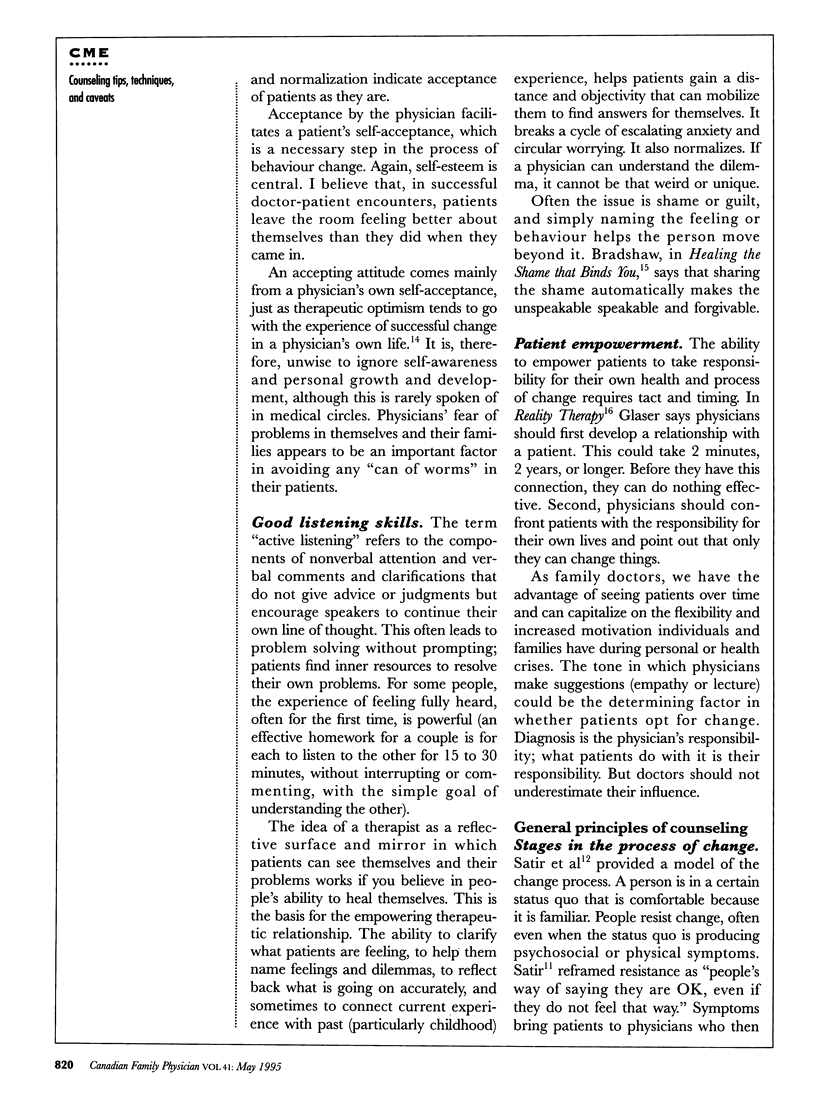
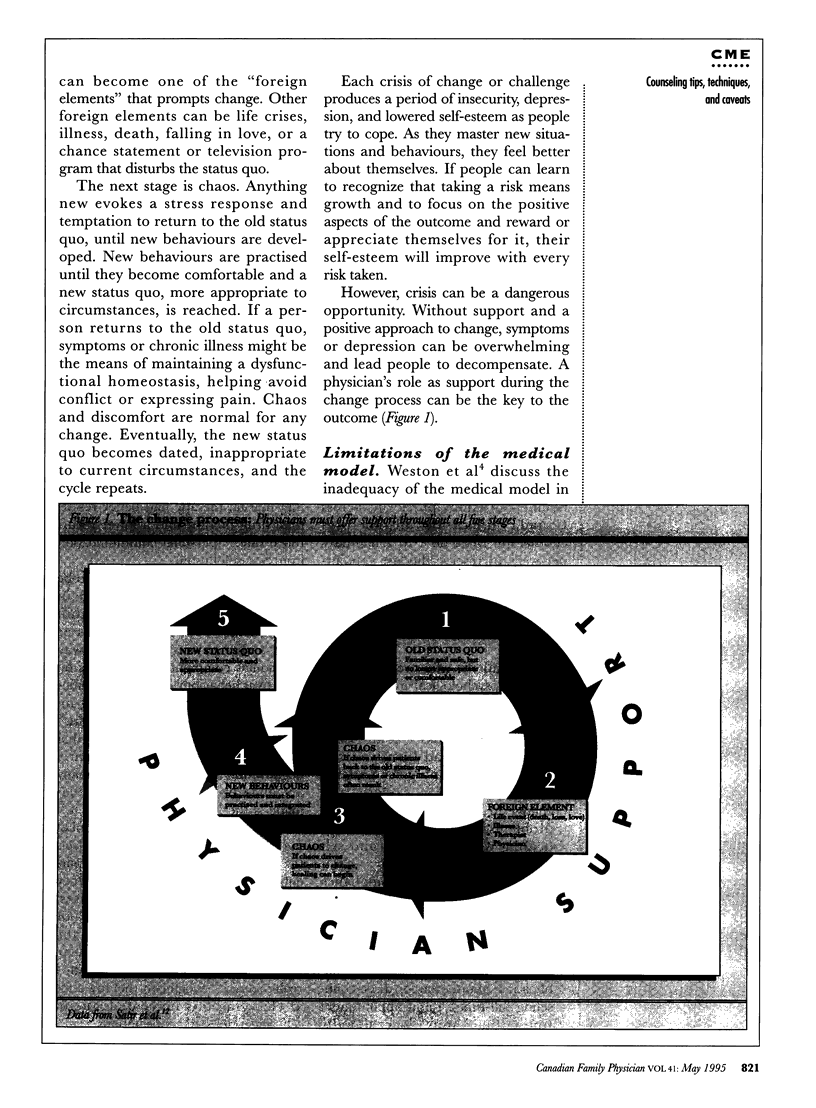
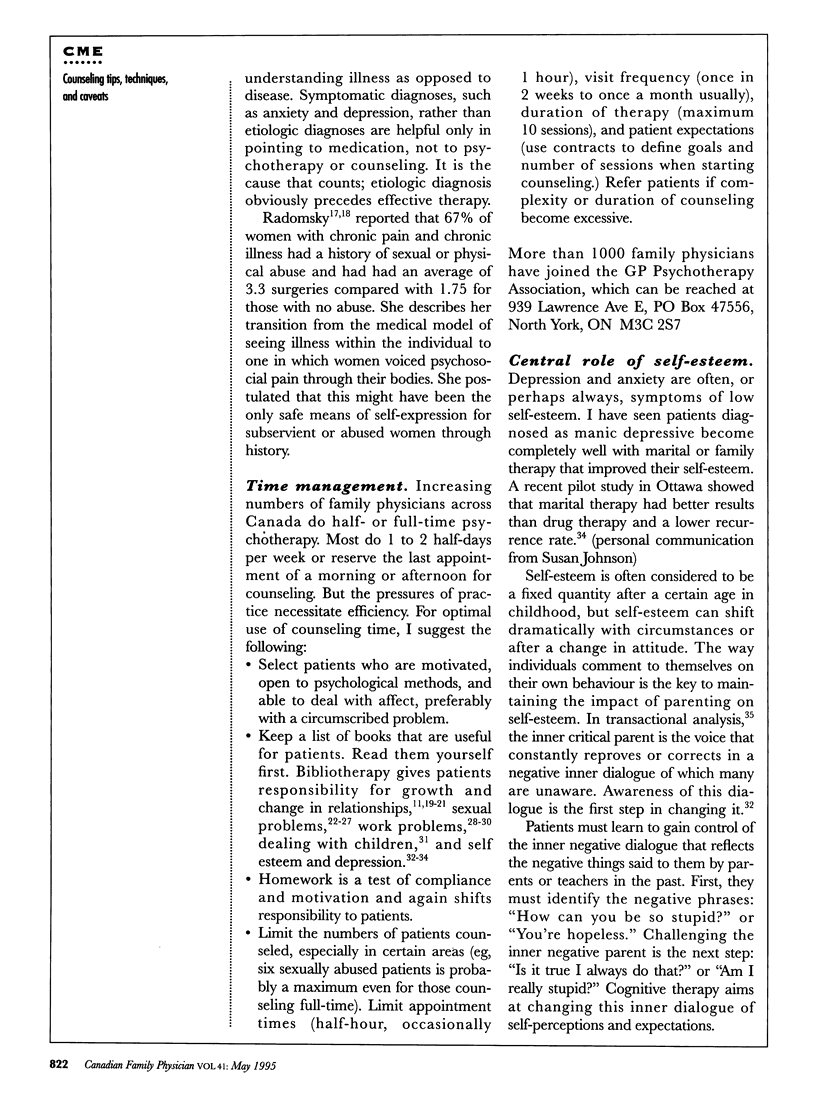
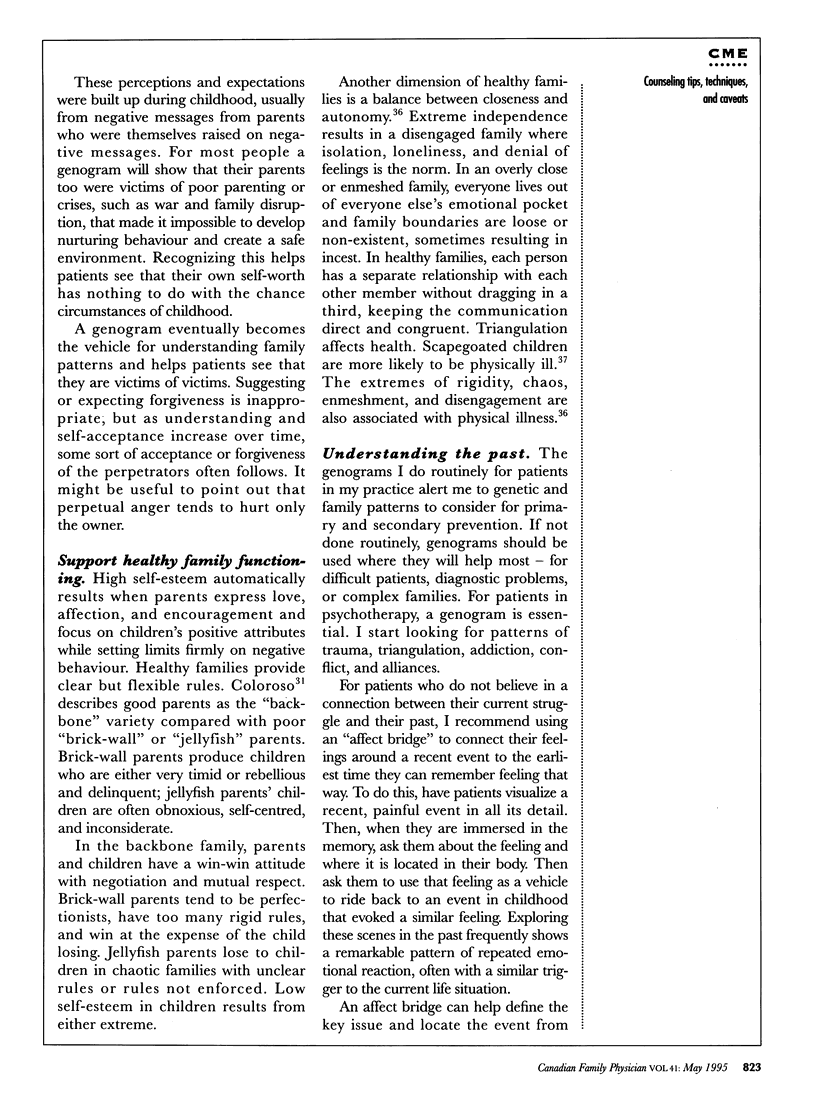
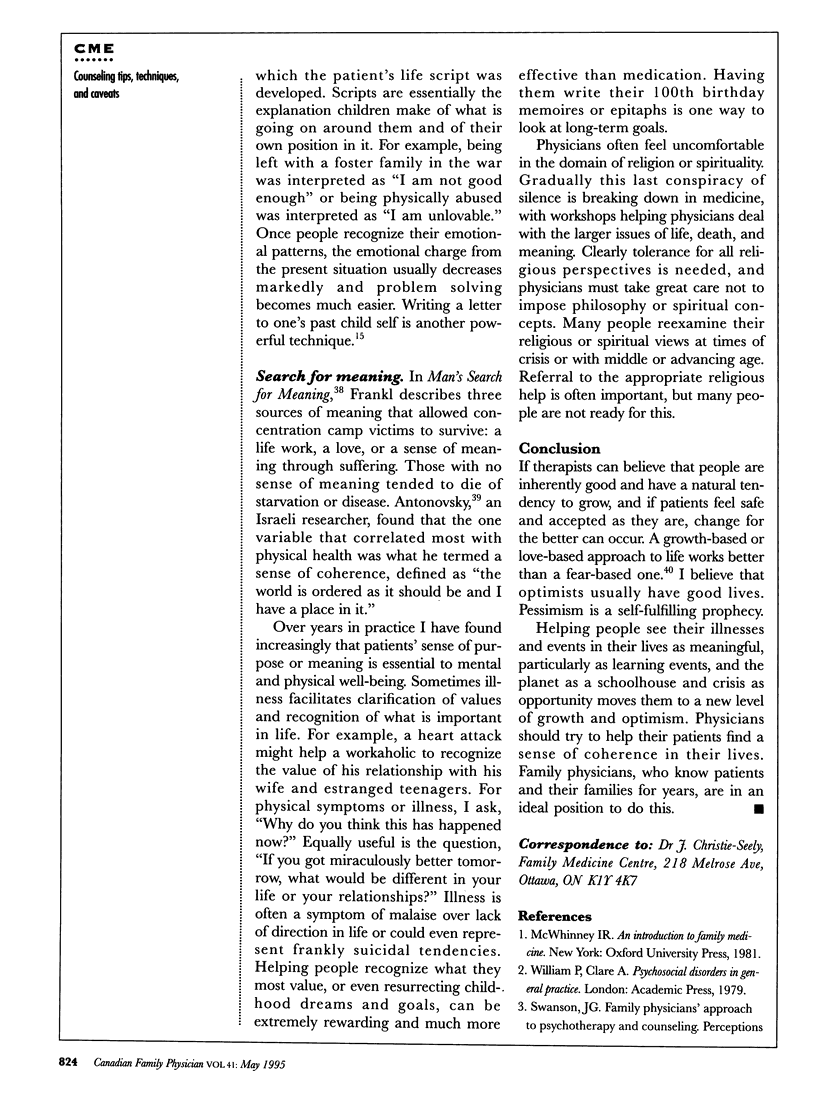
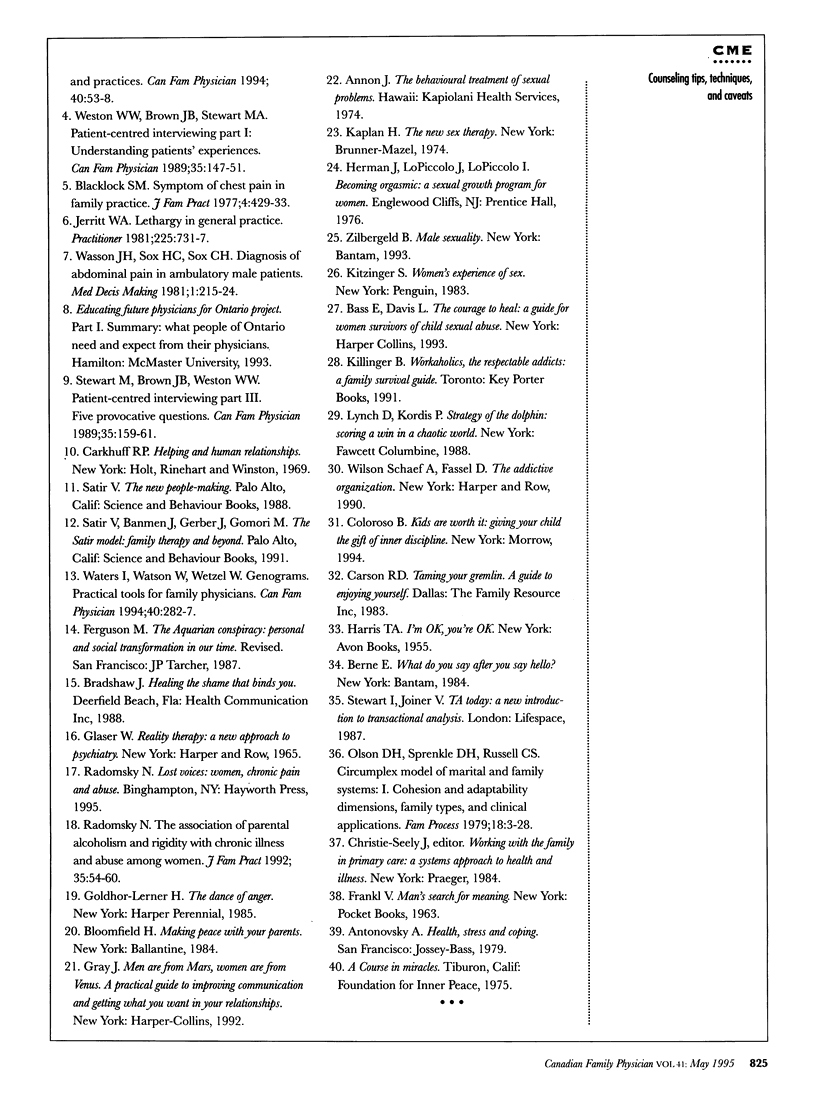
Selected References
These references are in PubMed. This may not be the complete list of references from this article.
- Blacklock S. M. The symptom of chest pain in family practice. J Fam Pract. 1977 Mar;4(3):429–433. [PubMed] [Google Scholar]
- Jerrett W. A. Lethargy in general practice. Practitioner. 1981 May;225(1355):731–737. [PubMed] [Google Scholar]
- Olson D. H., Sprenkle D. H., Russell C. S. Circumplex model of marital and family system: I. Cohesion and adaptability dimensions, family types, and clinical applications. Fam Process. 1979 Mar;18(1):3–28. doi: 10.1111/j.1545-5300.1979.00003.x. [DOI] [PubMed] [Google Scholar]
- Radomsky N. A. The association of parental alcoholism and rigidity with chronic illness and abuse among women. J Fam Pract. 1992 Jul;35(1):54–60. [PubMed] [Google Scholar]
- Wasson J. H., Sox H. C., Jr, Sox C. H. The diagnosis of abdominal pain in ambulatory male patients. Med Decis Making. 1981;1(3):215–224. doi: 10.1177/0272989X8100100302. [DOI] [PubMed] [Google Scholar]
- Waters I., Watson W., Wetzel W. Genograms. Practical tools for family physicians. Can Fam Physician. 1994 Feb;40:282–287. [PMC free article] [PubMed] [Google Scholar]


